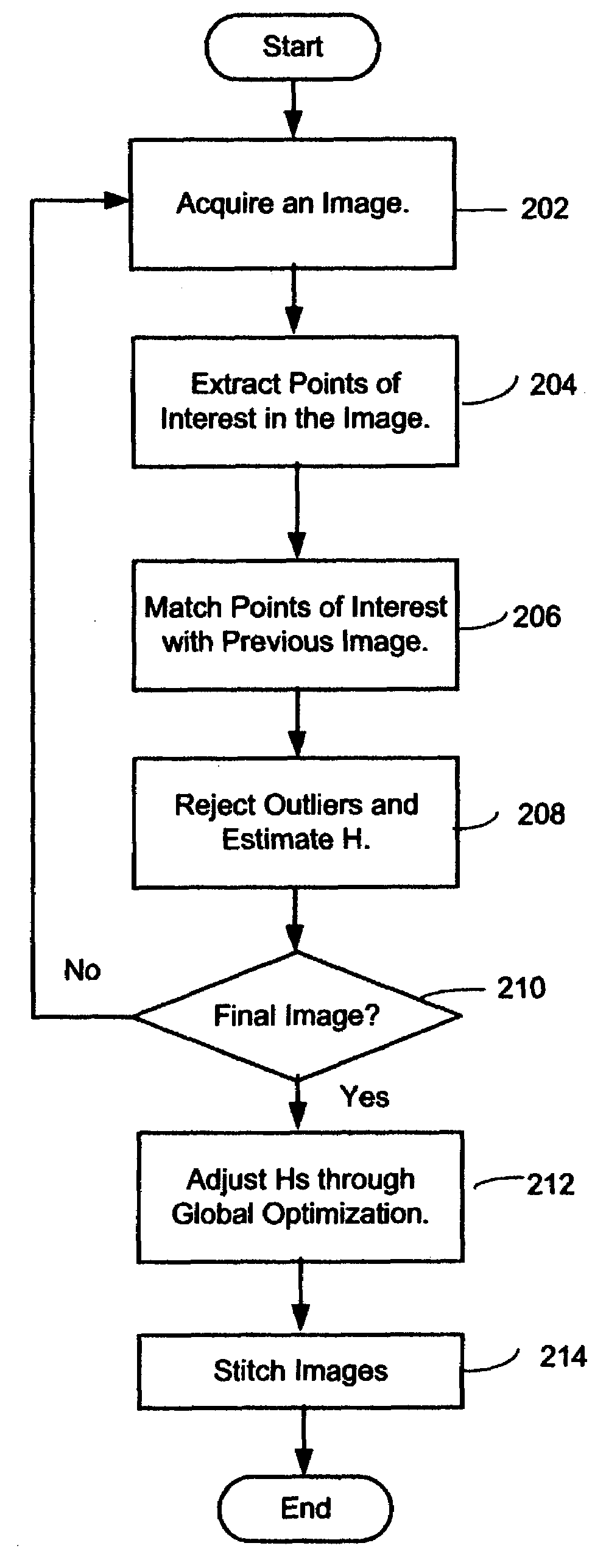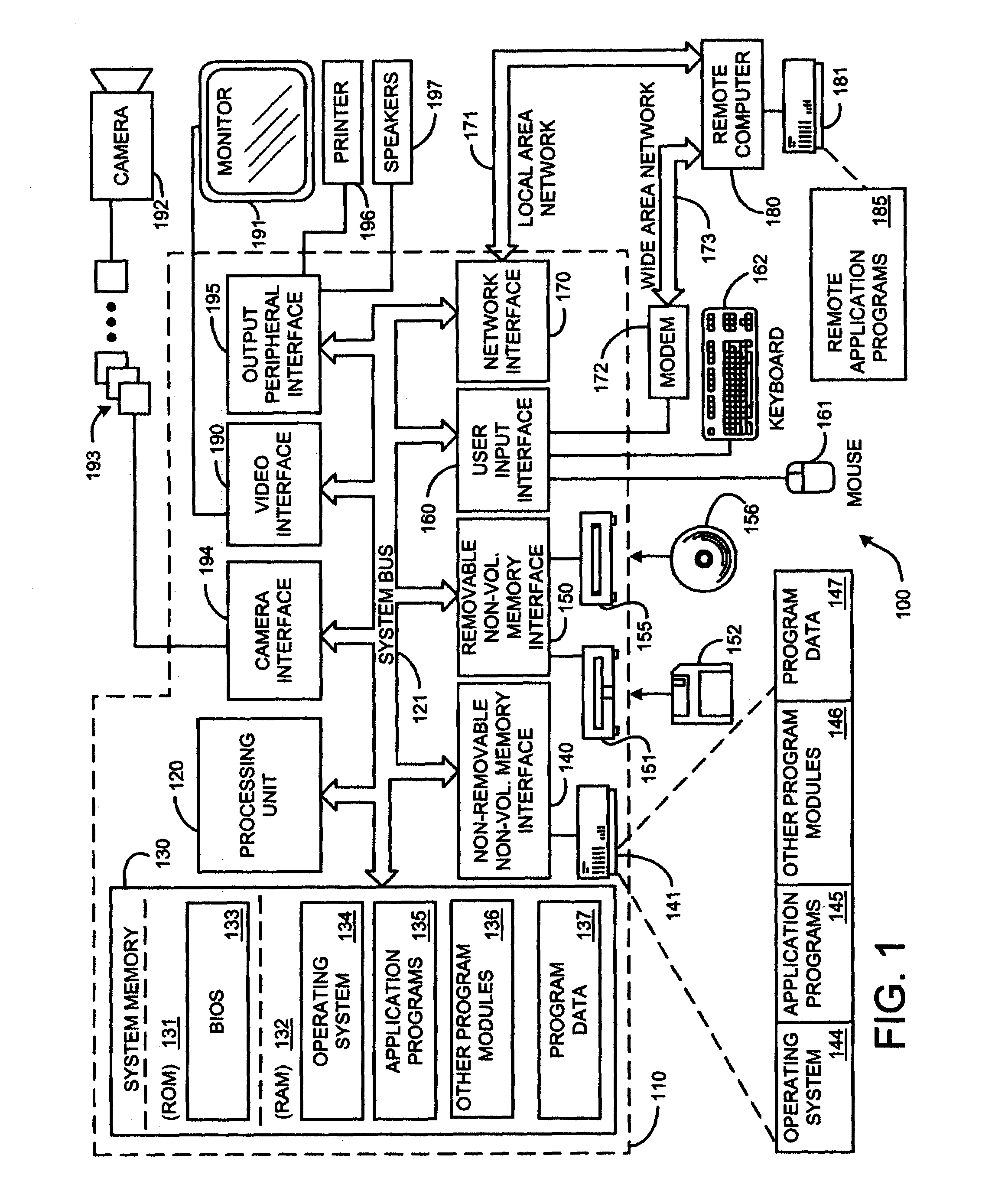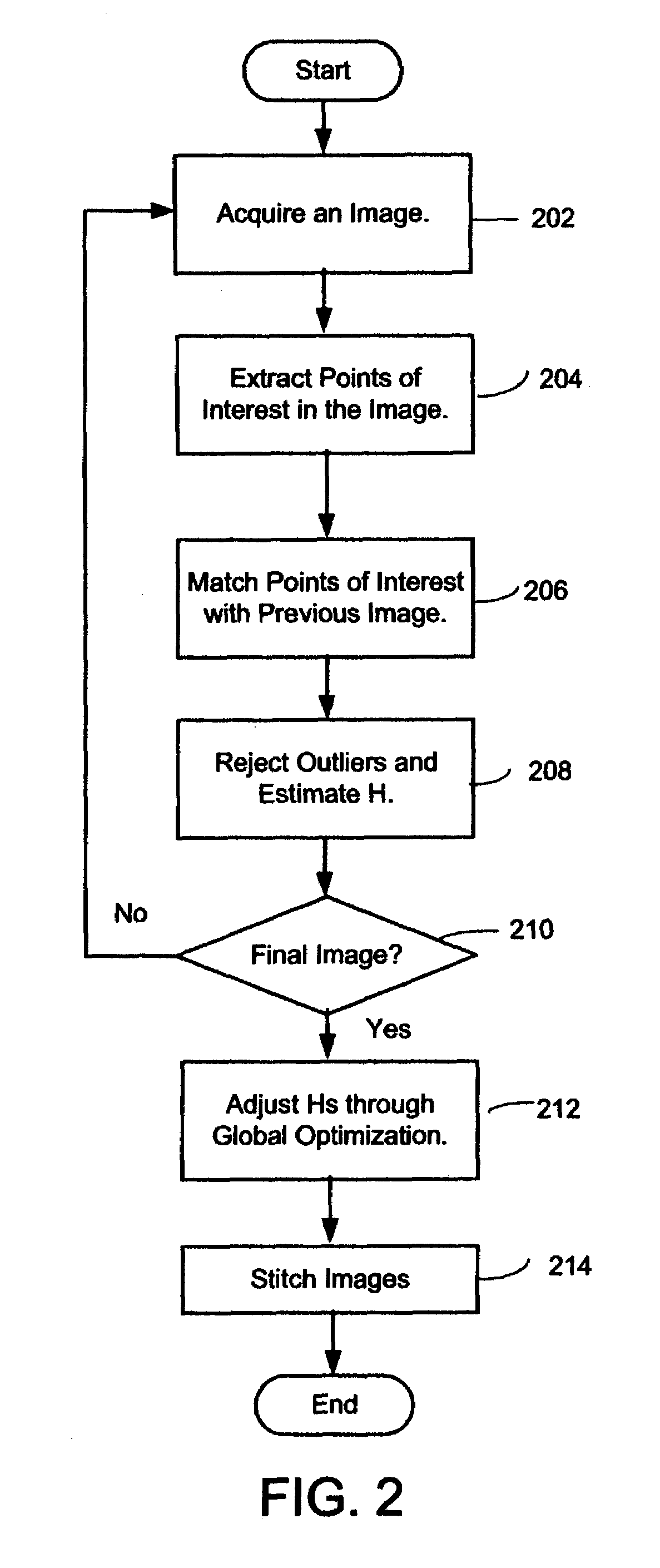System and method for whiteboard scanning to obtain a high resolution image
a whiteboard and high resolution technology, applied in the field of whiteboard scanning system and method, can solve the problems of not being able to copy annotation images, capturing the content of whiteboard or paper documents, and often interfering with the active participation of many participants, so as to reduce blur
- Summary
- Abstract
- Description
- Claims
- Application Information
AI Technical Summary
Benefits of technology
Problems solved by technology
Method used
Image
Examples
exemplary working embodiment
3.0 Exemplary Working Embodiment
[0090]The following paragraphs describe an exemplary working embodiment of the system and method of converting the content of a whiteboard, paper, or similar object into a high-resolution image.
[0091]In this section, a few examples are shown. FIGS. 11 and 12 show the stitching result of six images of a whiteboard. FIGS. 13 and 14 show the stitching result of a paper document. The stitched paper document, shown in FIG. 14A, is compared in FIG. 14B with a single image of the document, and clearly the stitched image gives a much higher readability.
PUM
 Login to View More
Login to View More Abstract
Description
Claims
Application Information
 Login to View More
Login to View More - R&D
- Intellectual Property
- Life Sciences
- Materials
- Tech Scout
- Unparalleled Data Quality
- Higher Quality Content
- 60% Fewer Hallucinations
Browse by: Latest US Patents, China's latest patents, Technical Efficacy Thesaurus, Application Domain, Technology Topic, Popular Technical Reports.
© 2025 PatSnap. All rights reserved.Legal|Privacy policy|Modern Slavery Act Transparency Statement|Sitemap|About US| Contact US: help@patsnap.com



